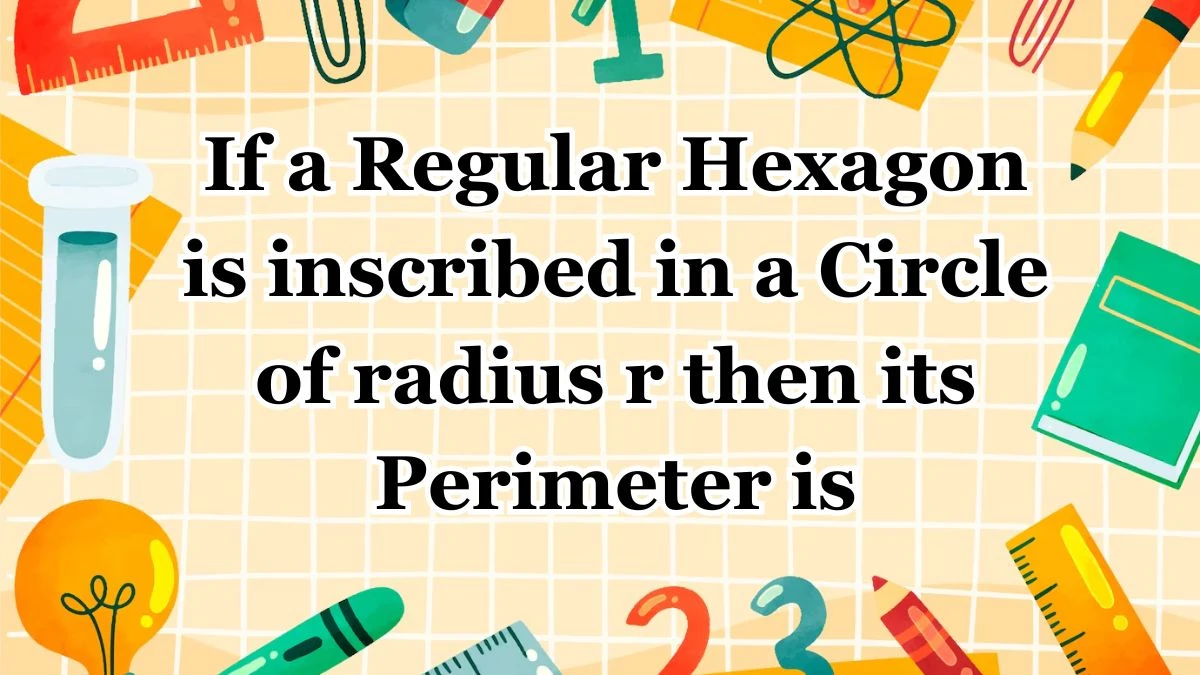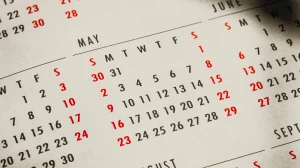If a Regular Hexagon is inscribed in a Circle of radius r then its Perimeter is
by
Updated Jul 12, 2024

If a Regular Hexagon is inscribed in a Circle of radius r then its Perimeter is
When dealing with a regular hexagon inscribed in a circle, a fascinating relationship exists between the radius of the circle and the sides of the hexagon. Understanding this relationship can help in finding the perimeter of the hexagon.
A regular hexagon is a six-sided polygon where all sides and internal angles are equal.
An inscribed hexagon is one that is drawn inside a circle such that all its vertices lie on the circumference of the circle.
By joining the center of the circle (let’s call it O) to the vertices of the hexagon, the hexagon can be divided into six equilateral triangles.
Each of these triangles has a central angle of 60° because the total angle around point O is 360° and there are six triangles (360°/6 = 60°)
Since all the sides of an equilateral triangle are equal and the vertices of the hexagon lie on the circle, each side of the equilateral triangles is equal to the radius (r) of the circle.
To find the perimeter of the hexagon, we need to add up the lengths of all six sides. Since each side is equal to the radius (r) of the circle, the calculation is
Perimeter of the hexagon = 6 x side length
Here, the side length is r (the radius of the circle)
Perimeter = 6 x r = 6r
The perimeter of the hexagon is 6r
Relationship between Hexagons and Circles
When we look at a regular hexagon inscribed in a circle, we can discover interesting mathematical relationships that simplify understanding its properties and measurements. A regular hexagon is a six-sided shape with all sides and angles equal. When this hexagon is placed inside a circle, with each of its vertices touching the circle, it is called an inscribed hexagon.
Equilateral Triangles:
- When a regular hexagon is inscribed in a circle, connecting the center of the circle to the vertices of the hexagon divides the hexagon into six equilateral triangles.
- Each equilateral triangle has all sides of equal length, which are the same as the radius of the circle.
Central Angles:
Each of these six equilateral triangles forms a central angle of 60 degrees at the center of the circle. This is because the total angle around the center is 360 degrees, and dividing this by six gives us 60 degrees for each triangle.
Side Length and Radius:
The sides of these equilateral triangles are equal to the radius of the circle. This means that each side of the hexagon is also equal to the radius of the circle.
Importance
- This relationship helps in understanding the geometric properties of polygons and circles, especially when dealing with problems involving inscribed shapes.
- Knowing that each side of the hexagon equals the radius of the circle allows for easy calculation of the hexagon's perimeter.
- The regular hexagon's symmetry makes it a common subject in various fields of mathematics, including geometry and trigonometry.
- These properties are not just theoretical. They have practical applications in design, engineering, and nature, such as in honeycombs and certain types of tiling.




